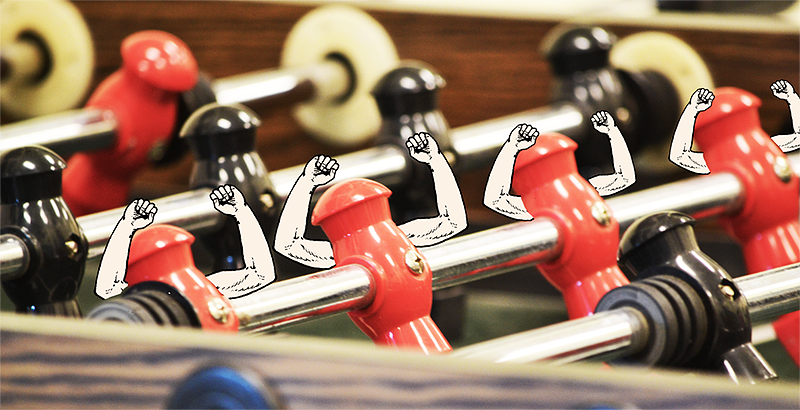It is likely that most of us have heard of the game Foosball, but I can only presume that its history is shrouded in mystery. Accompanying the installation of a Foosball table outside of the old Art Room, there has been a nation wide uptick of interest in the table-style sport, which has brought large crowds of upwards of 5 people to view the incredible showdowns. Throughout the school echos the boisterous cheers and boos, which are truthfully more akin to demonic, screeching animal noises than human shouts. However, while we can enjoy playing the tiny sport, to be true foosballers (slang for “fooser”) we must know its vibrant past.
Tracing as far back as the 1890s, Foosball has a long and incredible history. The first official patent was in 1923 by Harold S. Thorton. It is said that the idea came to him in a dream, little did he know that it would become a global phenomenon as the rebellious brother of Ping Pong. Played in homes everywhere, Foosball has created an air of camaraderie among all people and has been the glue to hold together long lasting friendships. It even stimulated the economy during the 1970s when it became a national activity. Prizes for the national tournaments even reached one million dollars until the ITSC collapsed due to bankruptcy. Foosball is still a popular pastime for many, but it has yet to regain the same global excitement that it had for the first 50 years of its traditional life.
However, what may be even more incredible than Foosball’s own success is the success of its legacy. No one could have ever imagined that Foosball would inspire the World’s largest human sized sport, Soccer. Little known fact: The more common term for Soccer, Football, was devised by replacing the ‘s’ in Foosball with a ‘t’. In 1930, seven years after the first patent of Foosball, the sport Soccer was created. In an effort to bring the fast paced, intense, and competitive table sport to life, the Fédération Internationale de Football Association (FIFA) devised a sport that could be enjoyed even outside of the home. Soccer became so popular that the first FIFA World Cup began on July 13, 1930, the same year as its creation. Interestingly enough, the United States became confused by the otherwise global term of ‘Football’ and instead sent an entire team of American Football (established officially in the 1880s) players to compete in the World Cup. The rest of the world allowed the United State’s team to play American Football against International Football; unfortunately, this has resulted in the USA’s failure to ever win the World Cup. Further illustrating the superior physical prowess of Soccer players.
Who could have ever imagined that Foosball has had such a huge impact on the world? Hopefully, we can now truly appreciate its importance and will cherish our brand new Foosball table for ages to come.

